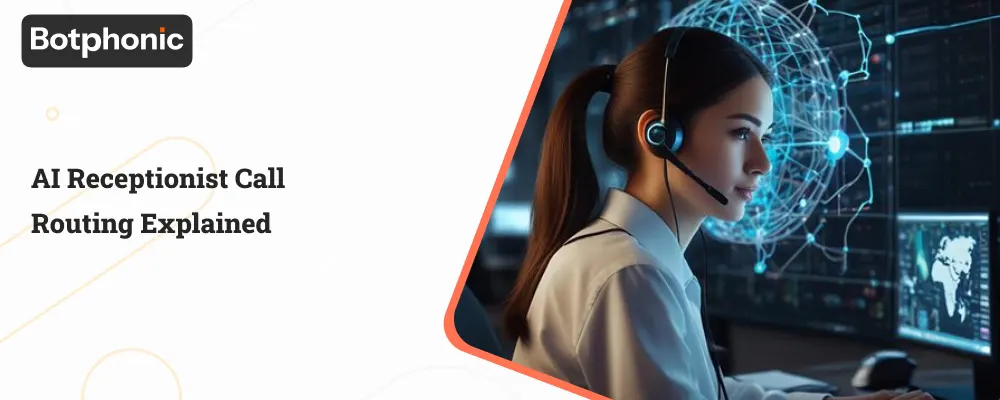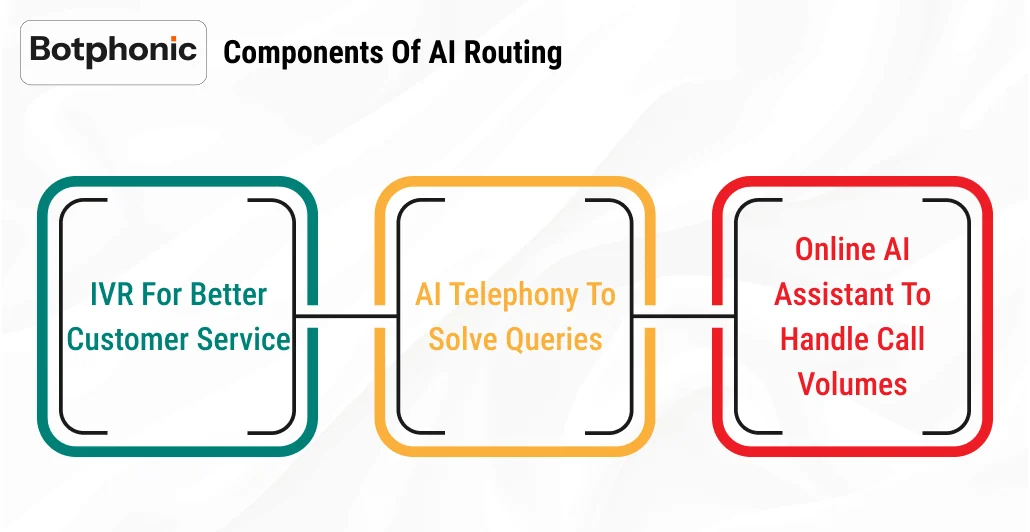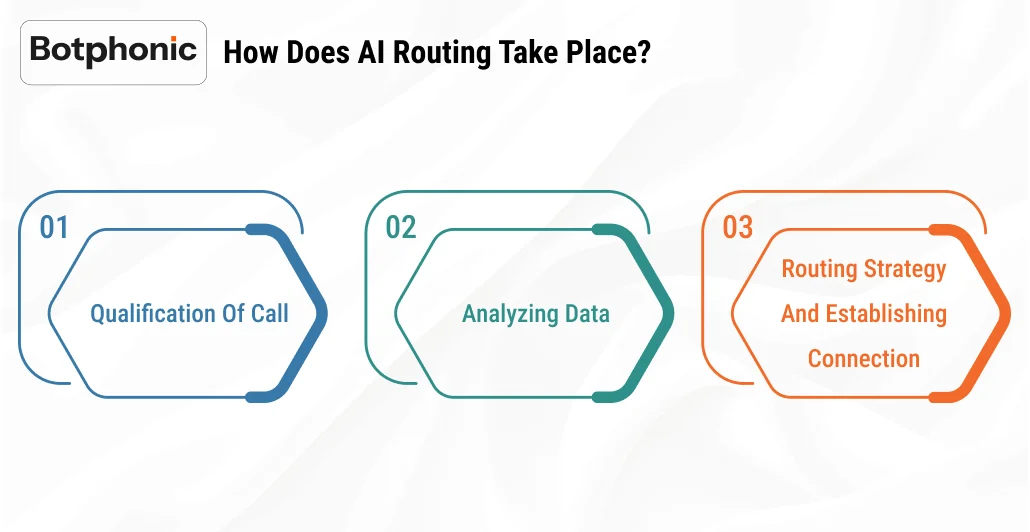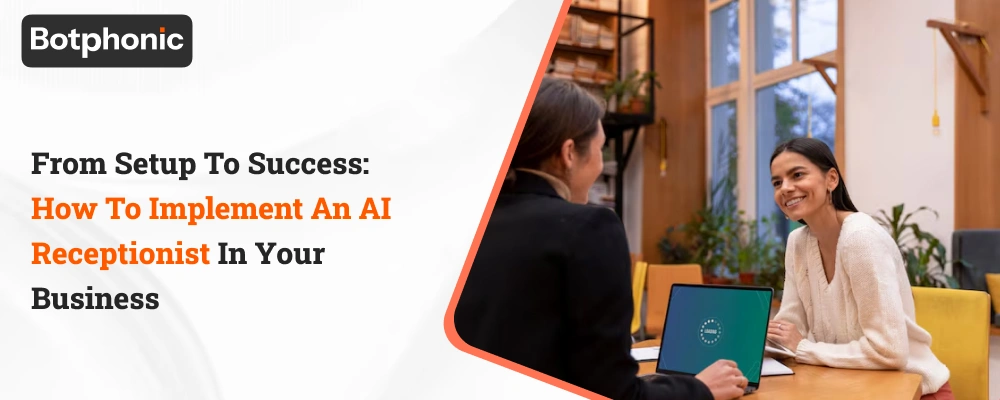
Summarize Content With:
Summary
Ever tried reaching the customer support of a business to be stuck in an endless loop of press 1, 2, or 3? This is where AI receptionist call routing comes into the play. By bringing a powerful pack of intelligence and speed, it connects customers instantly to the right team member. Let’s discover how AI call routing drives out frustration and brings in growth.
Introduction
The majority of people are aware of the hassle they face when contacting customer support. The process of buying might seem easier but settling any difficulty after purchase could be a total mess. And if you are a business know that poor customer support can break your empire.
Whenever a customer contacts your business they might have to wait for a long time to connect to the right agent. And might be even at times they might not reach the right spot. So what can be done? Implement AI receptionist that work accurately and quickly and are efficient in call routing.
Unaware of what AI receptionist call routing is? Let’s discuss it in detail. This text will explain to you all the details regarding call routing, how it works and its benefits to your business for customer satisfaction and retention.
Understanding AI call routing
As per a Harvard Business Review, the major problem that customers feel with businesses is when contacting their customer support team. As per customers:
- 56% people need to constantly repeat their problems
- 57% have to use phone interaction rather than web service
- 59% have to spend a lot to resolve their issues
- 59% shifted to another expert
- 62 % of people had to constantly contact each other to resolve their issue.
How can businesses resolve this? The answer is simple through efficient call routing. And when it’s AI involved in the process it gets even better. Businesses using AI call routing have seen 60% decrease waiting times for customers.
AI call routing helps direct calls to the best suiting agents as per the predefined set of rules, callers input and current condition of your customer support. And all of this through the power of AI. These AI receptionists answer calls just like humans. The factors that decide call routing are:
- Call volumes that your business experience both in real time and in future.
- Customer sentiment and intent
- Business hours, number of agents and their availability, and work schedules.
- Agents, their expertise, work profile, and language choices
- Relationship with customers, account and call priority
- AI based algorithms for automatic and smart call routing
If no human agent is free then the call routing goes straight into the voicemail boxes or sent to the call queue. It might even ask customers if they want to schedule a callback as an alternative to avoid keeping it on hold. Unlike traditional IVRs, now you can smartly route your calls without any manual workload.
Willing to replace your traditional call centers with AI agents?
Book a free demo nowComponents of AI routing

AI driven call routing is a new way to handle bulk volume of calls. But it’s necessary to understand how it works before you even use it. Let’s know about its three crucial components, one at a time.
1. IVR for better customer service
A person calling to the customer has it in their mind that these systems are rigid and they have to go through a long manual process. For instance if someone wants to reschedule their appointment, they have to go through
- IVR asks them to either press 1,2,3 or 4 but still your query is not in the menu.
- Maybe you don’t know the meaning of certain options and so fail to choose.
- You might choose the correct option and then comes the second list of choices which is way more annoying.
- And finally the nightmare, you choose all correct options to only know you landed at the wrong department.
But with the AI power IVR systems customers get to ask what they want in their own words. These advanced AI systems use NLP to understand what their customers want. Simply say “I want to reschedule my appointment” and your call is transferred to the right place.
2. AI telephony to solve queries
Human agents can work on more crucial takes if your AI voice agent can handle simple queries. In this case the waiting time of your customers will be reduced to less than half. AI call assistant are capable of handling all routine inquiries and monotonous questions.
AI voice agents from providers like Botphonic AI employ machine learning along with NLP to provide appropriate responses to customers. They can even engage in multi-turn conversations and converse as per users input.
These AI agents can understand the query of users in real time and resolve them immediately without delays.
3. Online AI assistant to handle call volumes
To decrease average call costs you need to do more than just enhancing your IVR systems. The main aim is to reduce the frequency of instances where customers have to calm repeatedly.
For this you can implement an AI chatbot on your website, application, social media or any other communication platform. Hence you can deliver instant responses to your customers.
When you handle routine inquiries in this simple manner, customers do not have to call your customer support every now and then.
How does AI routing take place?

The process of call routing is divided into following three steps:
Step 1: Qualification of call
For starting with call routing, an AI receptionist collects the data of customers and detects their intent. It analyzes why customers have called and their key data as per their answers into the IVR systems.
As soon as the customer calls AI based IVR will pick up the call, greet them and ask a predefined set of questions to gather data. This includes information like reason for calling, phone number, any previous record of interaction and more.
Later it even accesses the data from the company and checks on the customer’s history of purchase, interaction and customer support.
Step 2: Analyzing Data
After collecting all the necessary data, the system will analyze it and detect intent. If the AI agent is incapable of handling it will match the scenario with predefined rules and capabilities of agents.
For instance if a customer is furious about services and wants to contact the team, it will instantly connect them to a senior team member.
The intent analysis includes detecting urgency, customer preferences and availability of agents with particular skill sets. The best AI algorithms can complete this entire process quickly.
Step3: Routing strategy and establishing connection
Based on the result derived from analysis, the system intelligently and quickly decides the best routing strategy to answer the caller’s questions.
Hence an AI assistant might even direct the call to the most appropriate agent, or place them in a virtual queue. It might even offer them a callback option if all live agents of the department are occupied.
There are two types of call transfers: Warm and cold. In case of cold calls routing, the live agent to whom the call is routed doesn’t know anything about the matter and starts from scratch and the customer has to explain the entire scenario. But in case of warm call transfer the agent has access to context before passing the call.
Comparison between AI call routing and traditional routing
| Aspects | AI call routing | Traditional call routing |
| Routing | Intelligent, data-driven and adaptive | Fixed rules and IVR menus. |
| Customer experience | Personalized faster, fewer transfers | Repetitive menus and multiple transfers. |
| Efficiency | Lesser wait times and improved resolution rates | Longer handling and less accurate |
| Scalability | Easier to scale with growth | Becomes complex and costly |
| Cost | Higher setup but lower long term cost | Lower setup but higher long term cost |
| Future readiness | Omnichannel and AI integration | Limited and outdated |
Benefits of AI call routing
A properly implemented call routing strategy could impact overall business and most importantly customer satisfaction. Here are some more benefits it could provide to your business:
1. Exceptional customer experience
From the perception of customers the biggest drawback in the service of business is long wait times, repeating information and frequent escalations. Hence if you help customers avoid these, you are already on the top. AI receptionist call routing can make this possible for your business. It reduces call wait times and connects customer calls immediately to the agent.
2. Balanced workload for agents
It is a clear fact that agents might have a higher workload at particular times. They might even face more complicated work with each passing year. But the AI assistant takes careful consideration while routing a call. It considers factors such as idle time, talk time and workload of an agent. Planning routing strategy carefully with intelligent AI solutions could balance workload among agents.
3. Lesser call abandonment
It is very common for a customer to hang up a call if they are not immediately connected to a live agent. Hence it can increase the rate of abandonment. People are never willing to wait for a long time. They want to quickly resolve their issues. Although it’s nearly impossible to meet the expectations of customers, you can ensure that they get in touch with the agent as soon as possible through call routing.
Learn more: How an AI Receptionist Answers Calls?
Conclusion
AI receptionist call routing is your customer support ninja that is working silently in the background. It predicts needs, connects customers instantly to the agents and reduces wait times. No more cases of navigating endless menus and still not reaching the right place. It’s not just about handling call volumes but also developing an experience that lasts long with customers. It compels them to come back. Know that the future of support is not human neither machine it’s just smart work.

